Welcome to a day in the life of a Hollings scholar featuring Ellie Madigan! I spent my summer at Rookery Bay National Estuarine Research Reserve (NERR) in Naples, Florida. My research focused on the diet of black skimmers (Rynchops niger), a seabird, as an indicator of ecosystem health. To analyze that, I took photos of the skimmers bringing fish back to their colony and surveyed fish in a nearby feeding ground. I worked with my mentors, two Rookery Bay NERR staff: Collette (Col) Lauzau, an avian biologist, and Jay Black, the research coordinator.
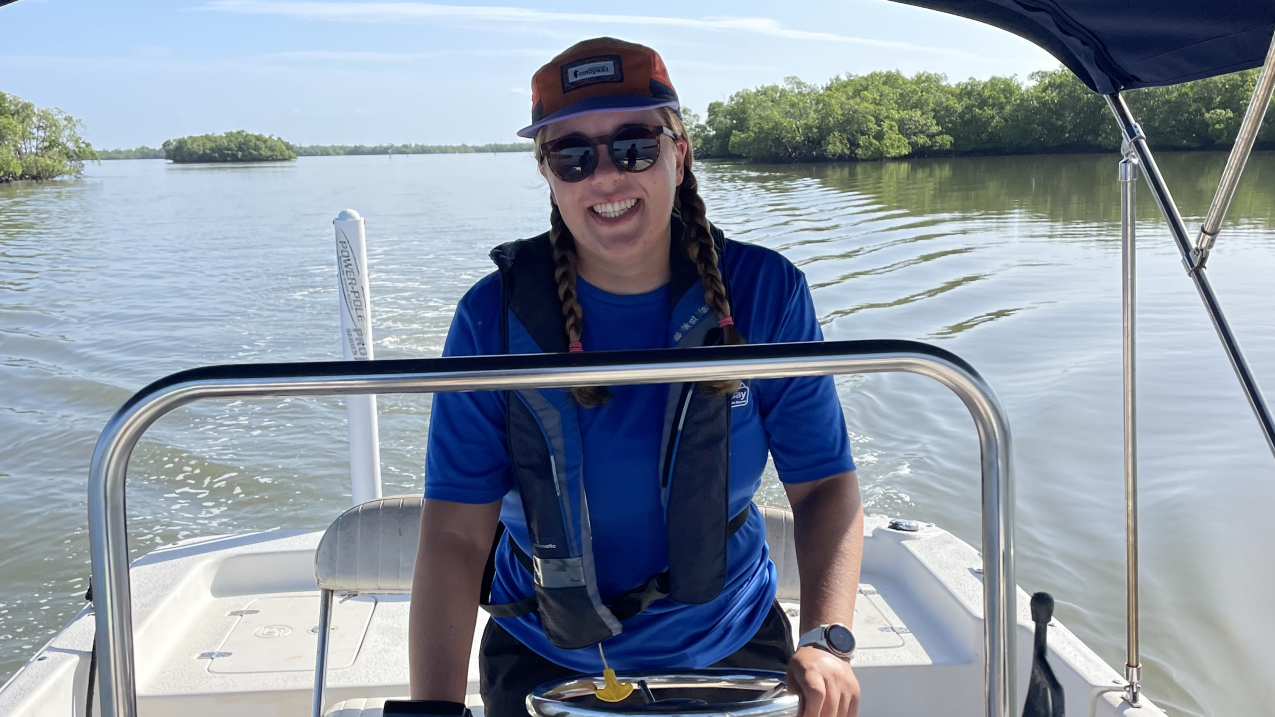
Ellie Madigan, a 2022 NOAA Hollings scholar, drove a boat out to her field site, Big Marco Pass Critical Wildlife Area, on Marco Island, Florida, during her summer internship at Rookery Bay National Estuarine Research Reserve. (Image credit: Zach Matchinski)
5:30 AM - It’s an early wake up when you work with shorebirds in Florida during the summer. I eat a quick breakfast and pack some snacks but also lots of water and electrolytes before heading out to the boat house to grab the gear. Every day is different but today I’m going to my field site to photograph black skimmers as part of my data collection.
7:00 AM - We arrive at Big Marco Pass Critical Wildlife Area (CWA) where my field site is located. I sit down a "safe distance away from the restricted area" and try to get comfortable while I watch for birds flying in with fish for their mates. I pull out a notebook, binoculars, camera, and a water bottle and settle in for about two hours.
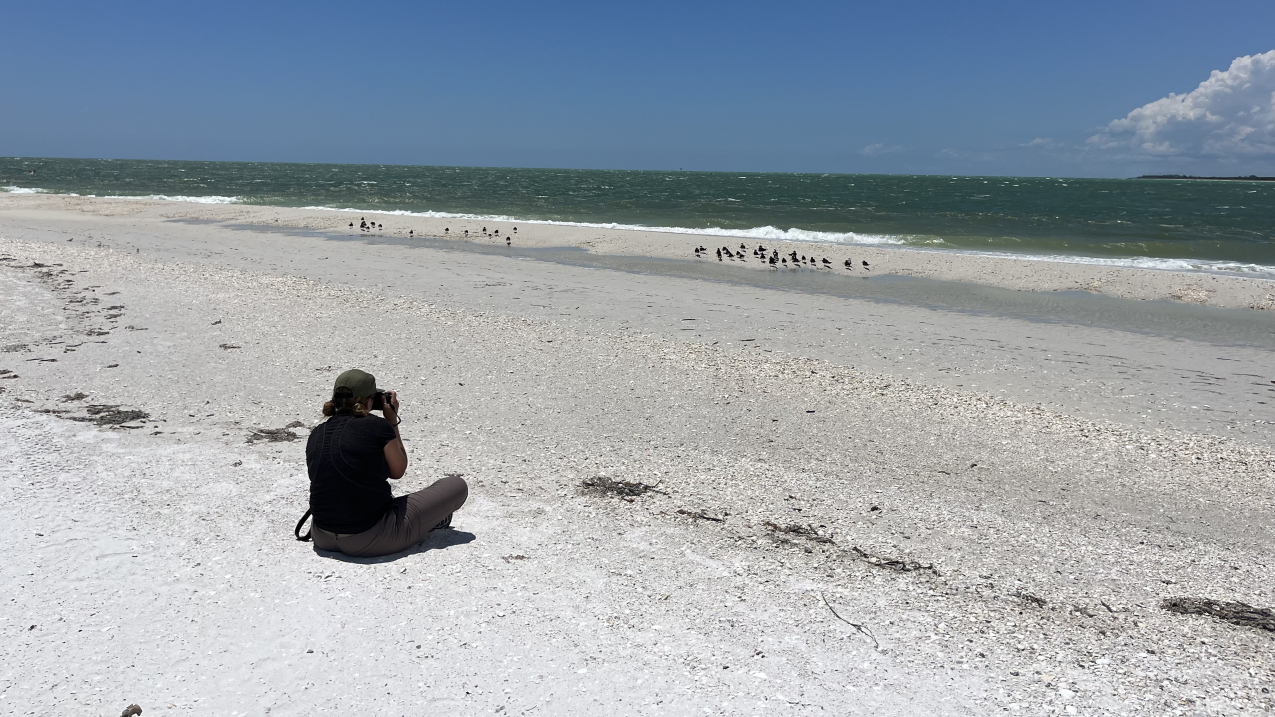
10:00 AM - Black skimmers are crepuscular feeders, meaning they feed at dawn and dusk, and it has started to get hotter so they slow down their mate feedings. My mentor, Col Lauzau and I decide to go set up a posting to restrict public access to an area with a new Wilson’s plover (Charadrius wilsonia) nest.
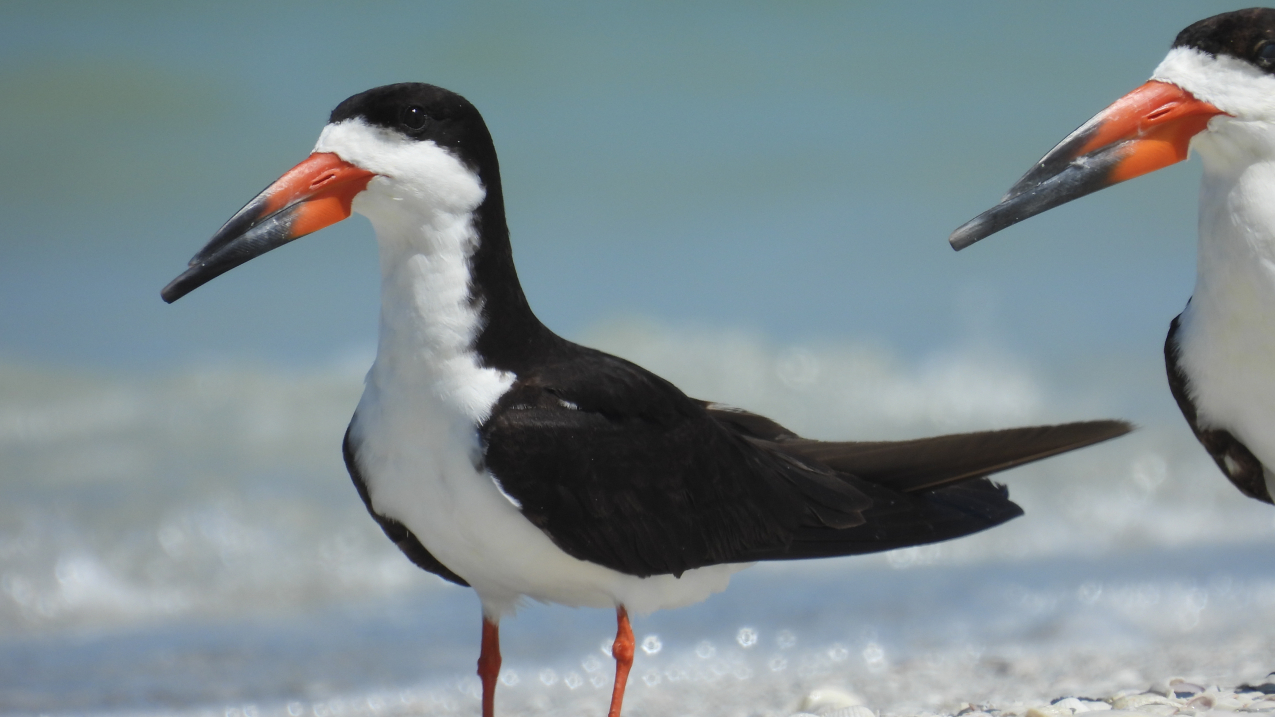
10:30 AM - We make it to Morgan Beach and I start digging holes for the posts that will make up the posting. The posting has to be big enough to protect the bird from beachgoers but also not so big that it imposes on beachgoers’ ability to enjoy the beach.
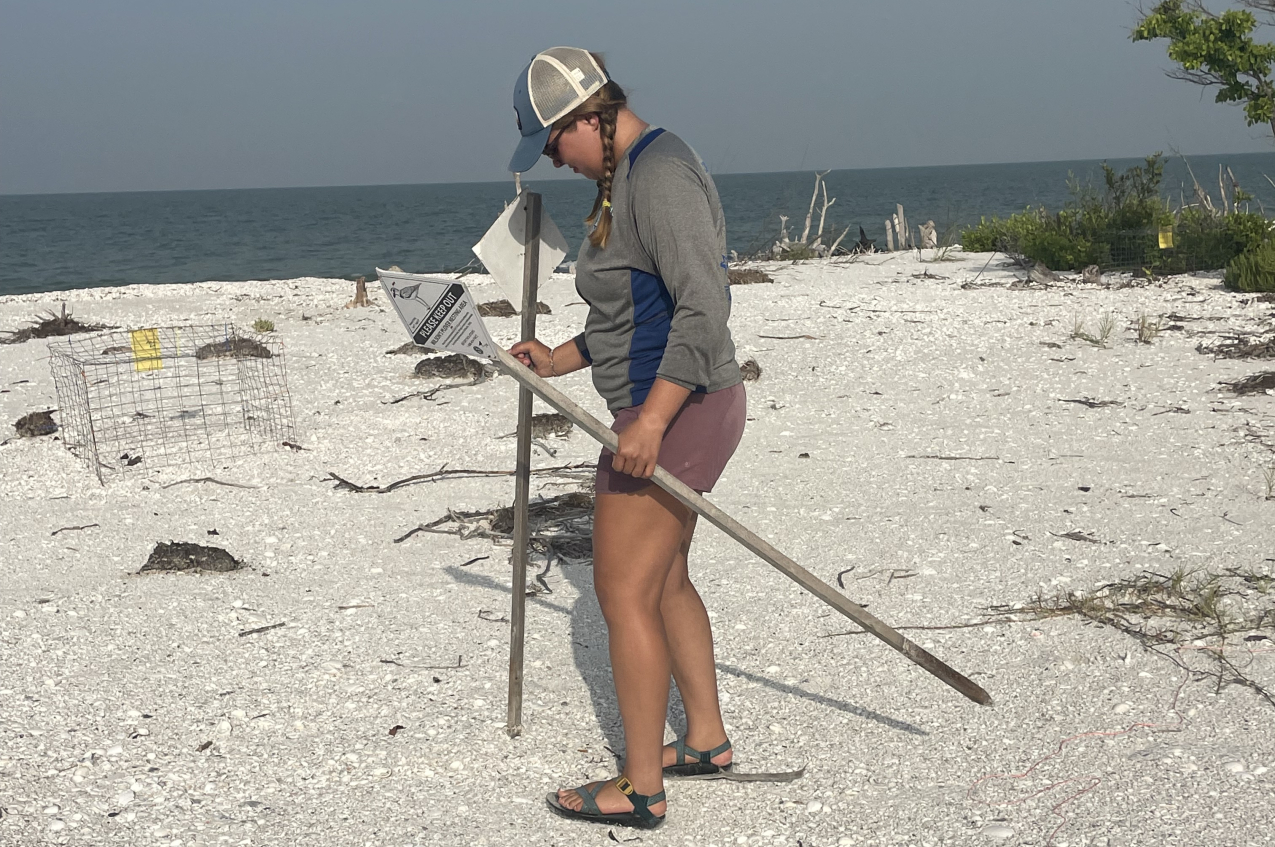
11:30 AM - Back at the dock before 12 p.m., our self-imposed stop time to avoid the unbearable heat. Now we unload the boat, clean it, and gas it. When we’re done in the field, I often have the rest of the day to do other things like:
- Fish surveys
- Data input
- Data analysis
3:00 PM - Today I have to conduct a fish survey for my research so I head back down to the boat to load it up. I have to bring a lot of gear for this survey to keep the fish and the people helping me with this survey safe. I put a seine net, buckets, dip nets, ID guides, wetsuit boots, a pop-up tent, lots of water, and notebooks in the boat.
3:30 PM - We’re back at Big Marco Pass but this time we stay in Tigertail Lagoon which is right next to my field site. My team of volunteers and I pull the seine net once at three different locations throughout the lagoon. After each pull we sort and measure the fish we collect and then release them.
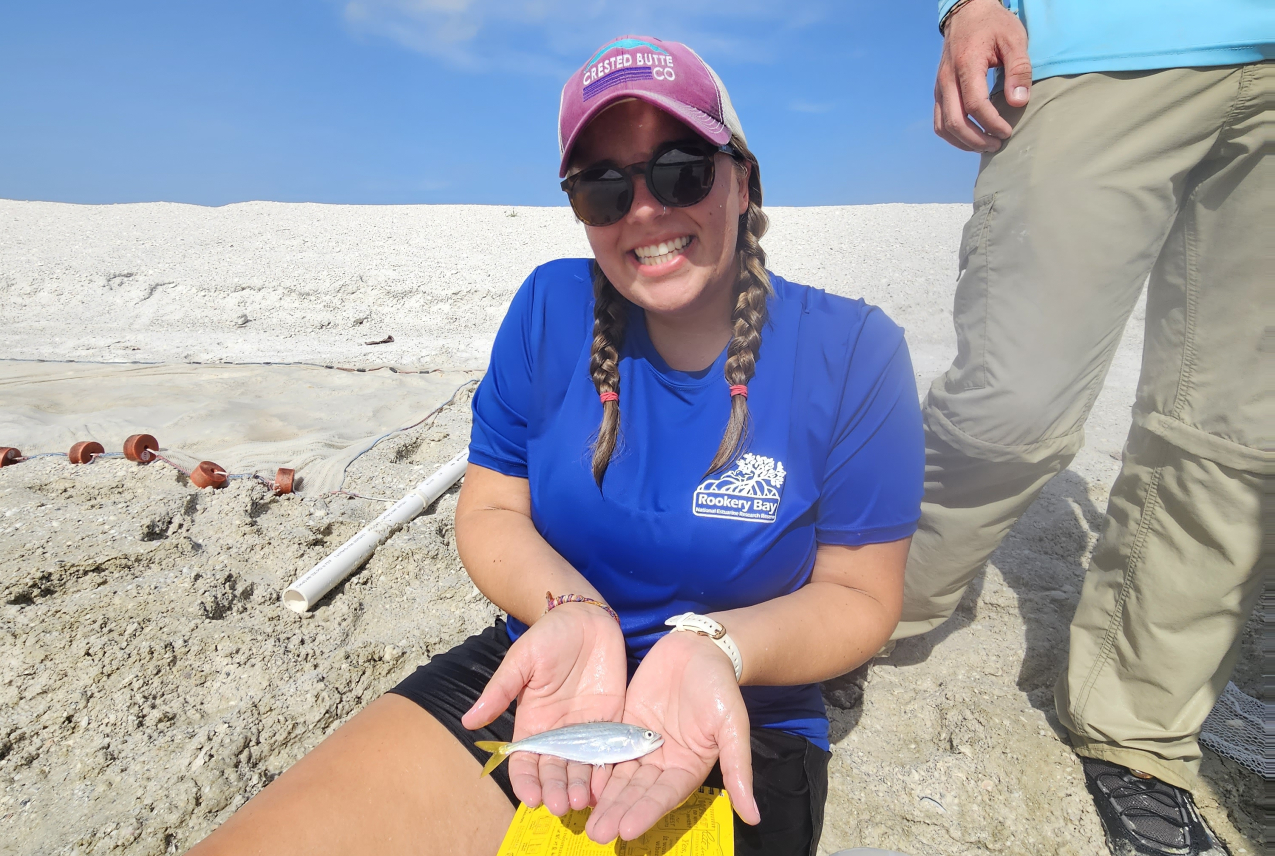
6:00 PM - Back at the dock again I rinse the seine net, buckets, nets, ID guides, and wetsuit boots. We unload the boat, clean it, and fill it up with gas. Then I head into my dorm to make dinner and catch up with my roommates.
On the days when I’m not helping with bird surveys or conducting my own research I get to join other research projects. Which included:
- Sea turtle nest monitoring
- Shark tagging
- Light trapping for moths
- Acoustic pit tagging gray snappers
- Water quality monitoring
- Trawling surveys
- Core sample collection in mangrove forests
Since we go out early in the day to avoid the heat I often have the afternoon to myself. So when I don’t have any other work to do or catch up on I go explore southwestern Florida. This summer I was able to go to Dry Tortugas National Park as well as the Everglades National Park. In my free time I liked to go swimming, kayaking, snorkeling, and especially birding, often bringing my camera along.
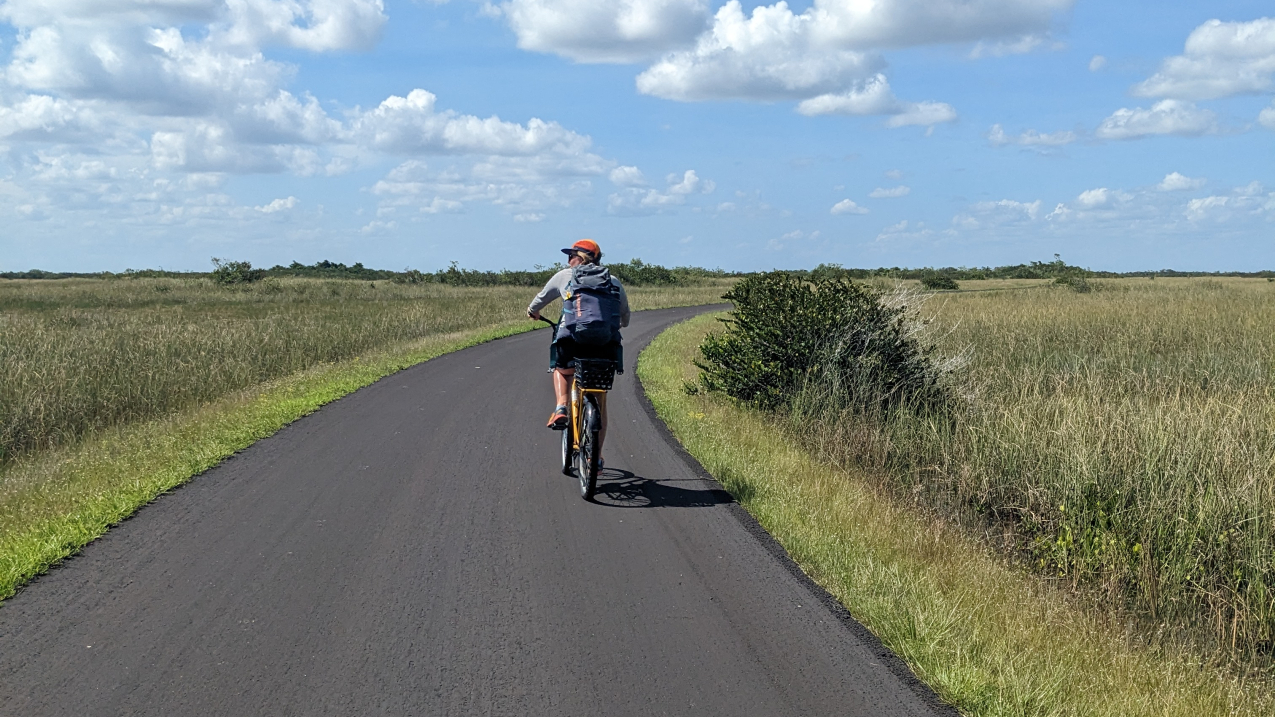
My favorite part of working at Rookery Bay NERR this summer was how every day was different. I was able to participate in a variety of activities and research projects which helped me figure out personal and professional goals!
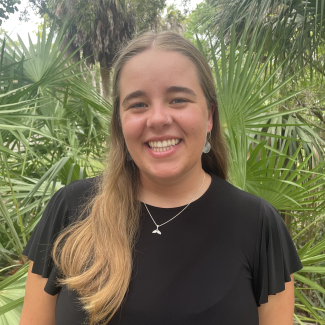
Ellie is a 2022 Hollings scholar double majoring in marine biology and wildlife and conservation biology at the University of Rhode Island.



